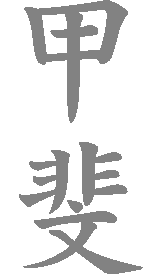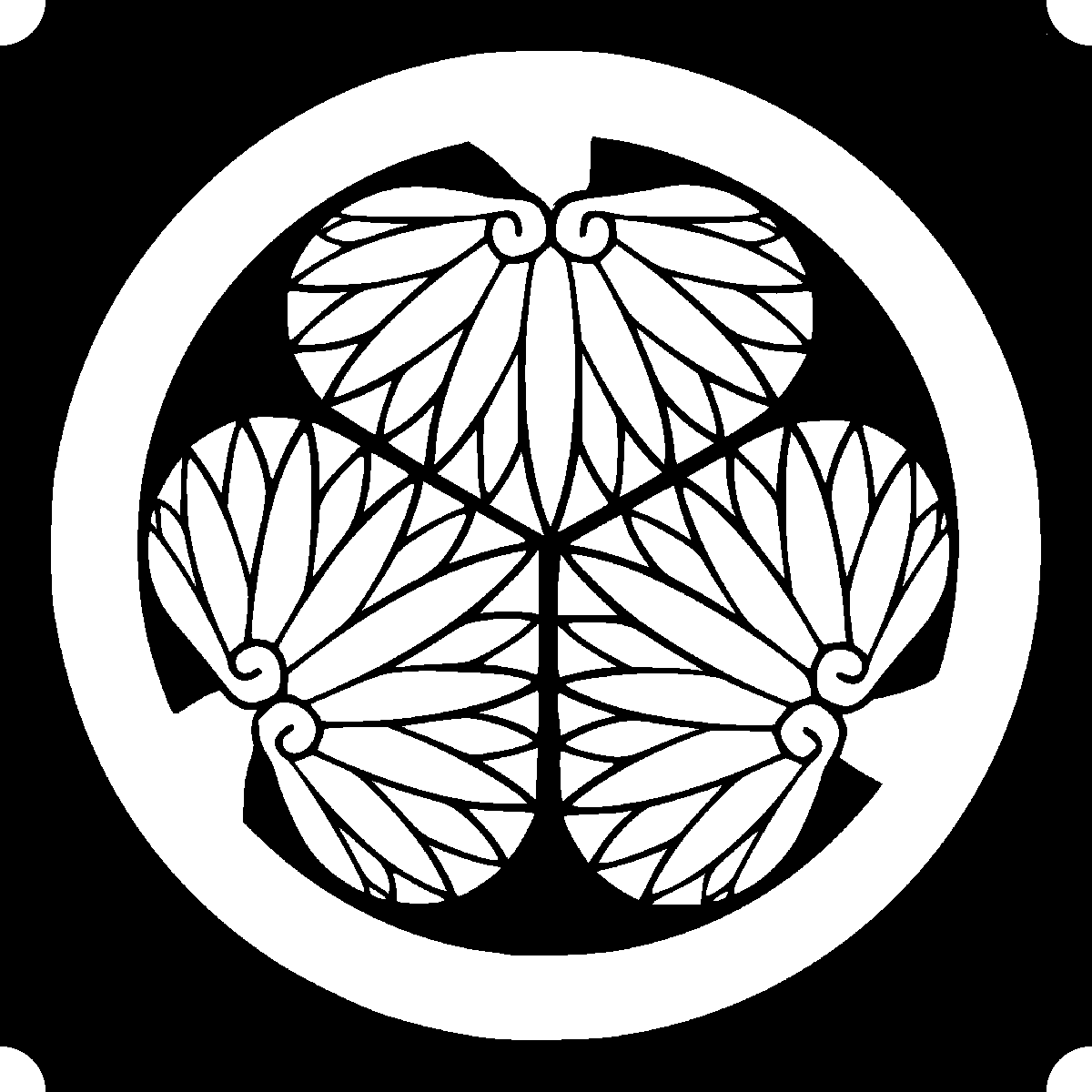|

DAIMYO of
KAI PROVINCE
Tokugawa


- Domain: Kofu (aka Fuchu)
- Stipend: Varied between 150,000 to 350,000 koku
- Class: Shogun domain
- Headquarters: Kofu Castle (Hilltop)
.jpg)
.JPG)
Kofu was capital of Kai province. Formerly called Fuchu, was during the
Kamakura shogunate, the residence of the Ichijo daimyo, Afterwards it became
part of the domains of the Takeda. In 1582 Nobunaga, having dispossesed Takeda
Katsuyori, gave Fuchu to Kawajiri Shigeyoshi, who was assassinated shortly
afterwards. Hideyoshi replaced him with Hashiba Hidekatsu, who resided at
Fukuchiyama (Tanba), and had the province of Kai administered by Kato
Mitsuyasu. In 1593, on the death of Hidekatsu, Asano Nagamasa was appointed to
Fuchu and built a castle there. In 1600 the province became a domain of the
Shogun, and in 1603 Ieyasu disposed of it in favor of his son Yoshinao,
Hiraiwa Chikayoshi being jodai. In 1607, when Yoshinao was transferred to
Nagoya, Fuchu was left without a daimyo. In 1618 it fell to the lot of
Tadanaga, brother of Iemitsu. In 1632, new interruption. In 1661 Tsunashige,
son of Iemitsu, became of daimyo of Kofu; in 1704 his son Tsunatoyo, who
succeeded him, having been adopted by the Shogun Tsunayoshi, was replaced by
Yanagisawa Yoshiyasu. Finally from 1724 Kofu belonged to the Shogun, who had
himself represented by a jodai, some joban, etc.
Succession
- Kawajiri Hidetaka
- Toyotomi Hidekatsu
- Kato Mitsuyasu (1537-1595)
- Asano Nagamasa (1546 - 1610)
- Asano Yukinaga/Yoshinaga (1576-1613)
- Tokugawa Yoshinao (1601-1650)
- Tokugawa Tadanaga (1606-1633)
- Tokugawa Tsunashige (1644-1678)
- Tokugawa Ienobu (1662-1712)
- Yanagisawa Yoshiyasu (1658-1714)
- Yanagisawa Yoshisato
- Tenryo (various administrators)
Notable Ancestors
-
Kato
Mitsuyasu (1537-1595)
At first served Nobunaga, then Hideyoshi, who gave him a revenue of 20,000
koku at Takashima (Omi). In 1590 he was raised to 240,000 koku in Kai. He died
in Korea.
-
Asano
Nagamasa (1546-1610)
.jpg)
Was the brother-in-law of Hideyoshi, whom he accompanied in his campaign
against the Mori clan in Sanyodo. In 1584 he intervened as pacifier between
Hideyoshi and Ieyasu; the following year he was one of the five bugyo and
received the title of Danjo-shosuke. During the war against the Hojo of
Odawara, he fought in Kozuke and Musashi and took the castles of Iwatsuki,
Edo, etc. (1590). Afterwards he took part in the expedition conducted by
Hidetsugu against Tsugaru. During the Korean war, he, together with Kuroda
Yoshitaka, was intrusted with the office of inspector of the army (kangun).
After the death of Hideyoshi, having relations with both parties, and not
liking to join either of them, he withdrew from public life and lived in
retirement in Fuchu (Musashi). In 1600, however, he followed Hidetada into
Tosando, and in return received 10,000 koku as reward.
-
Asano
Yukinaga/Yoshinaga (1576-1613)
.jpg)
Eldest son of Nagamasa, served first Hideyoshi and accompanied his father
during the war against the Hojo of Odawara, when, then only 15 years old, he
served his first campaign, with Honda Tadamasa. Ishida Kazushige tried to
implicate him in the plot of the Kanpaku Hidetsugu, but he was exculpated by
Maeda Toshiie. During the expedition to Korea, he marched with Kato Kiyomasa,
whom he succored at Urusan. On his return to Japan, when his father retired
from public life, he received the fief of Fuchu (Kai -- 200,000 koku), and
after Sekigahara (1600) was transferred to Wakayama (Kii --370,000 koku).
-
Tokugawa
Yoshinao (1601-1650)
.jpg)
7th son of Ieyasu. In 1603 received the fief of Fuchu (Kai -- 250,000
koku); then in 1607 that of Kiyosu (Owari -- 550,000 koku). Ieyasu was then
building the castle of Nagoya, where in 1610 Yoshinao was established, and
which his descendants occupied.
-
Tokugawa
Tsunashige (1644-1678)
3rd son of Iemitsu. In 1661 received the fief of Fuchu (Kai -- 250,000
koku). He died at the age of 35.
His son Tsunatoyo was Shogun under the name of Ienobu.
-
Tokugawa
Ienobu (1662-1712)
%20800x596.jpg)
6th Tokugawa Shogun, from 1709 to 1712.
Son of Tsunashige. In 1704 he was daimyo of Fuchu (Kai -- 350,000 koku)
when his uncle Tsunayoshi chose him as heir. He then changed his name
Tsunatoyo to Ienobu, and five years later received the title of Shogun at the
age of 47 years. The first act of his reign was to abrogate the severe laws
enacted by his predecessors against those who killed animals or caused them to
suffer. On the petition of Arai Hakuseki, he suppressed the custom which
obliged the greater number of the princes of the Imperial family to become
bonzes and the princesses to become ama, and he allowed them to marry. He
recoined the altered pieces of money that Tsunayoshi had introduced and gave
them their former value. Ienobu took the famous and learned Arai Hakuseki with
him from Kai, for he loved to follow his advice. He died at the age of 50, was
buried in the Zojo-ji (Shiba), and received the posthumous name of Bunsho-in.
-
Yanagisawa
Yoshiyasu (1658-1714)
.jpg)
Son of a simple samurai who had a revenue of 150 koku, was the protege of
the Shogun Tsunayoshi, who gave him the titles of Dewa no kami, Mino no kami,
roju, then in 1690 the fief of Sanuki (Kazusa -- 22,000 koku), and in 1694
Kawagoe (Musashi -- 82,000 koku). When Tsunayoshi adopted his nephew Tsunatoyo,
the latter left his fief of Kofu, which in 1704 was given to Yoshiyasu
(150,000 koku).
Sources
|
